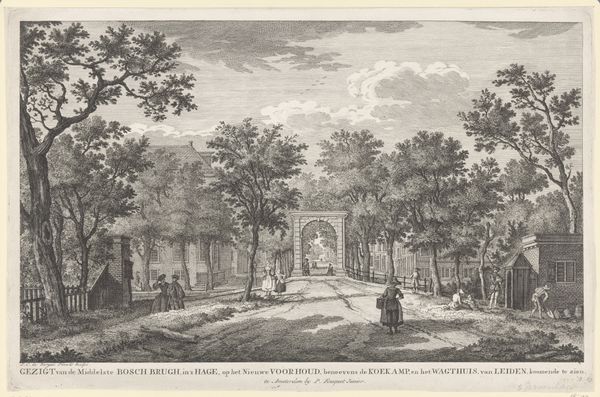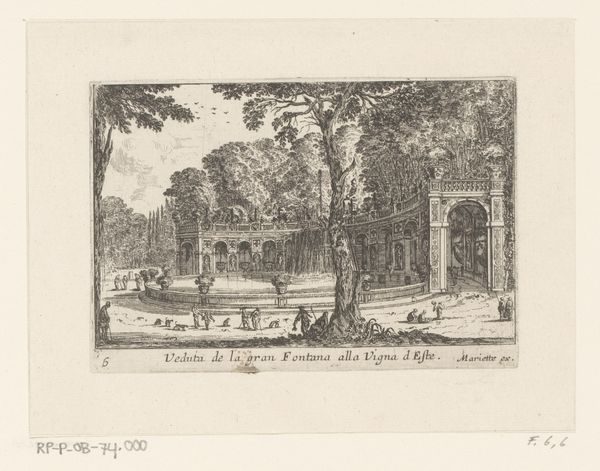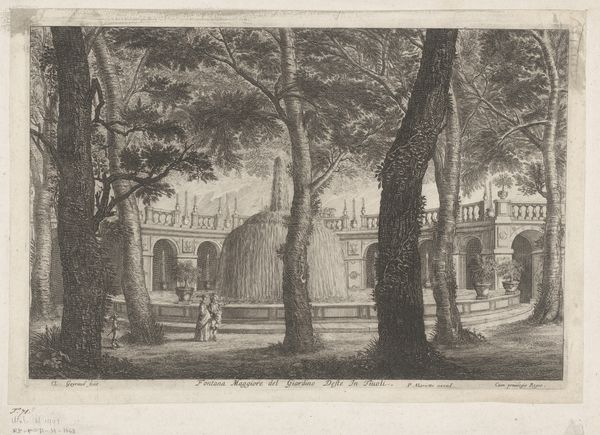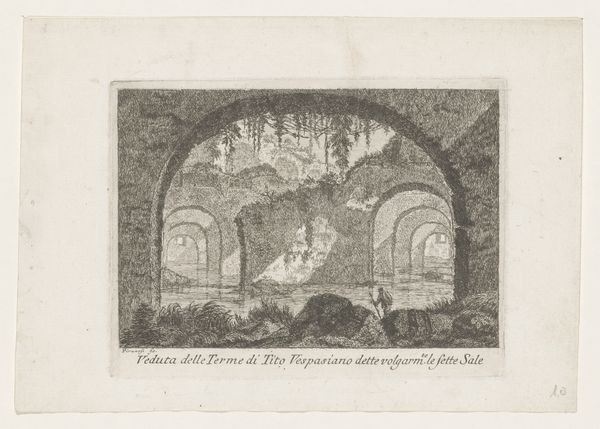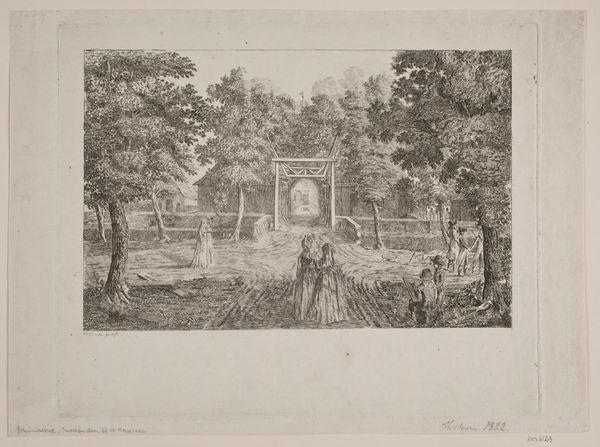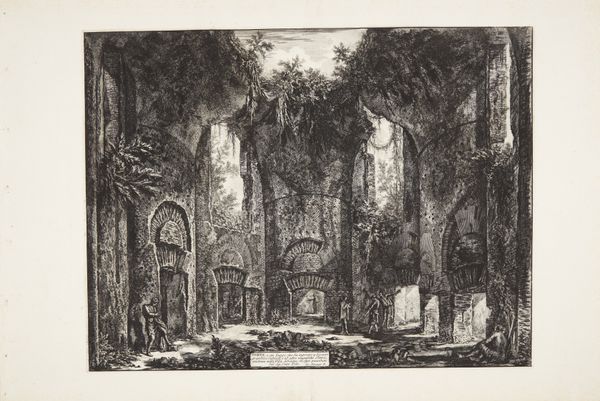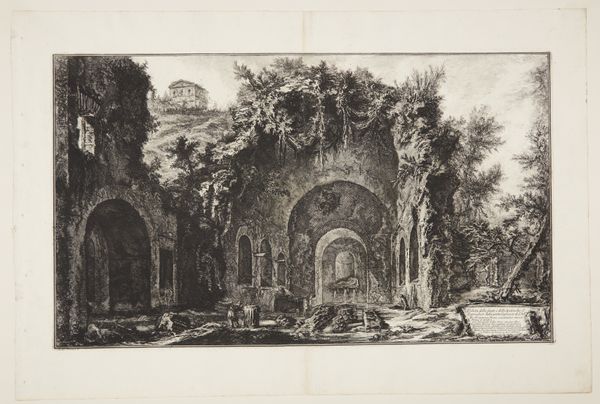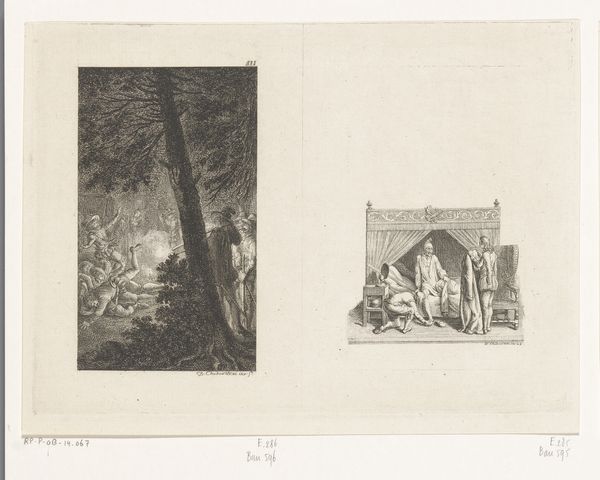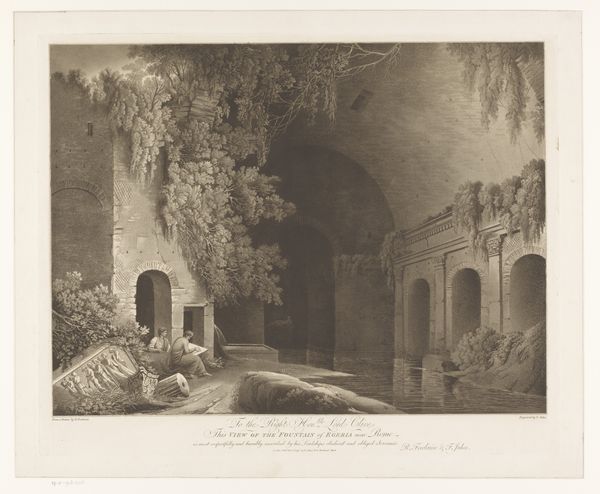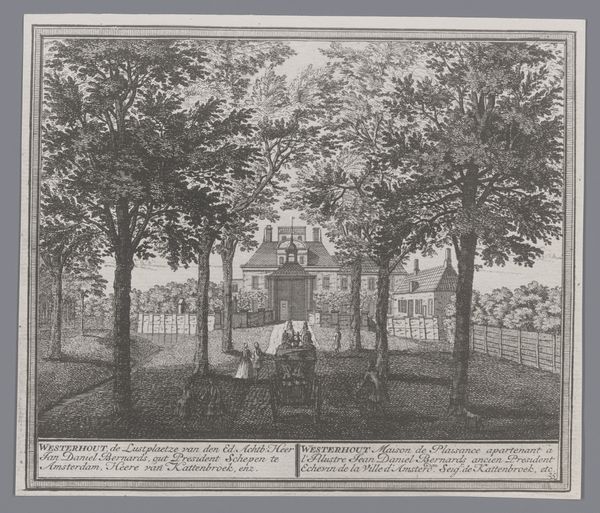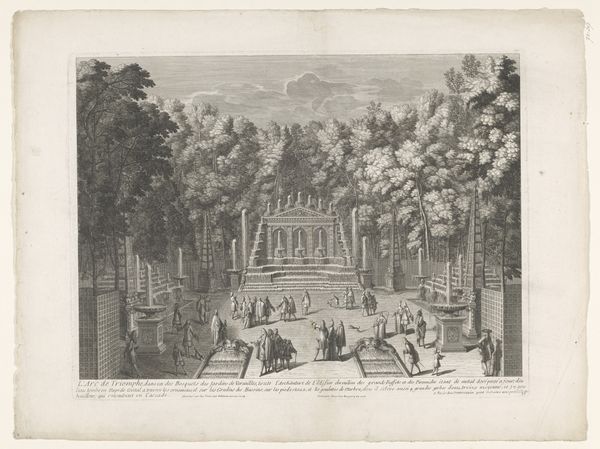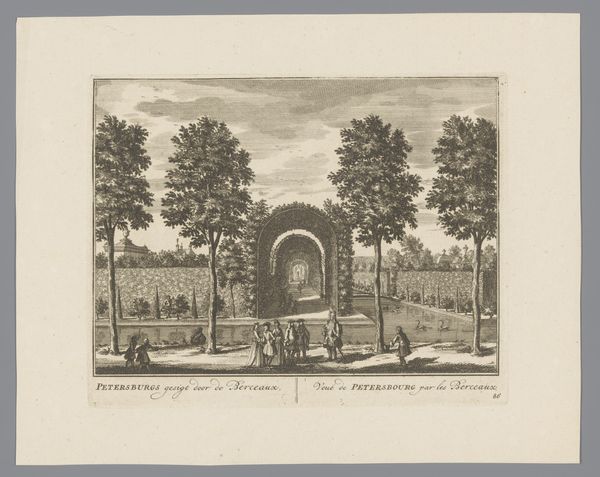
print, engraving
# print
#
landscape
#
figuration
#
orientalism
#
history-painting
#
engraving
Dimensions: height 178 mm, width 277 mm
Copyright: Rijks Museum: Open Domain
Jan Caspar Philips created this etching, "Jungle with Indian Temples," using an aged copper plate, sometime before his death in 1775. The printmaking process involved a division of labor. Philips would have carefully incised his design, the image reversed, into the prepared metal plate. The lines would then be filled with ink, the surface wiped clean, and finally pressed onto paper, leaving a permanent impression. This technique, born from the metalworking trades, allowed for the mass production of images, fueling the era's appetite for visual knowledge. Here, that knowledge is of a fantastical scene, of course. Consider the labor embedded in this print: from the mining of copper, to the hand-crafting of tools, to Philips's own artistry, and finally the work of the printing press itself. It speaks to a world rapidly changing due to trade and technology, one where even imagined landscapes could be circulated and consumed. This piece blurs the boundary between documentation and fantasy, mirroring the complex relationship between Europe and the cultures it encountered.
Comments
No comments
Be the first to comment and join the conversation on the ultimate creative platform.
